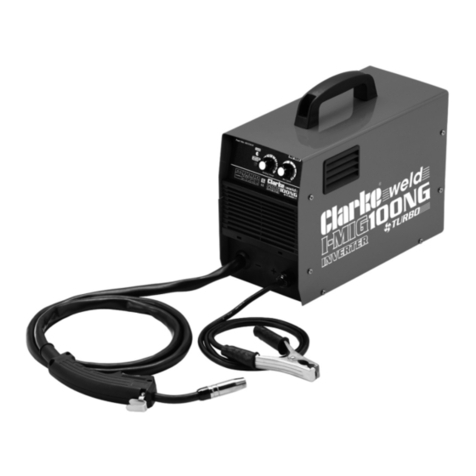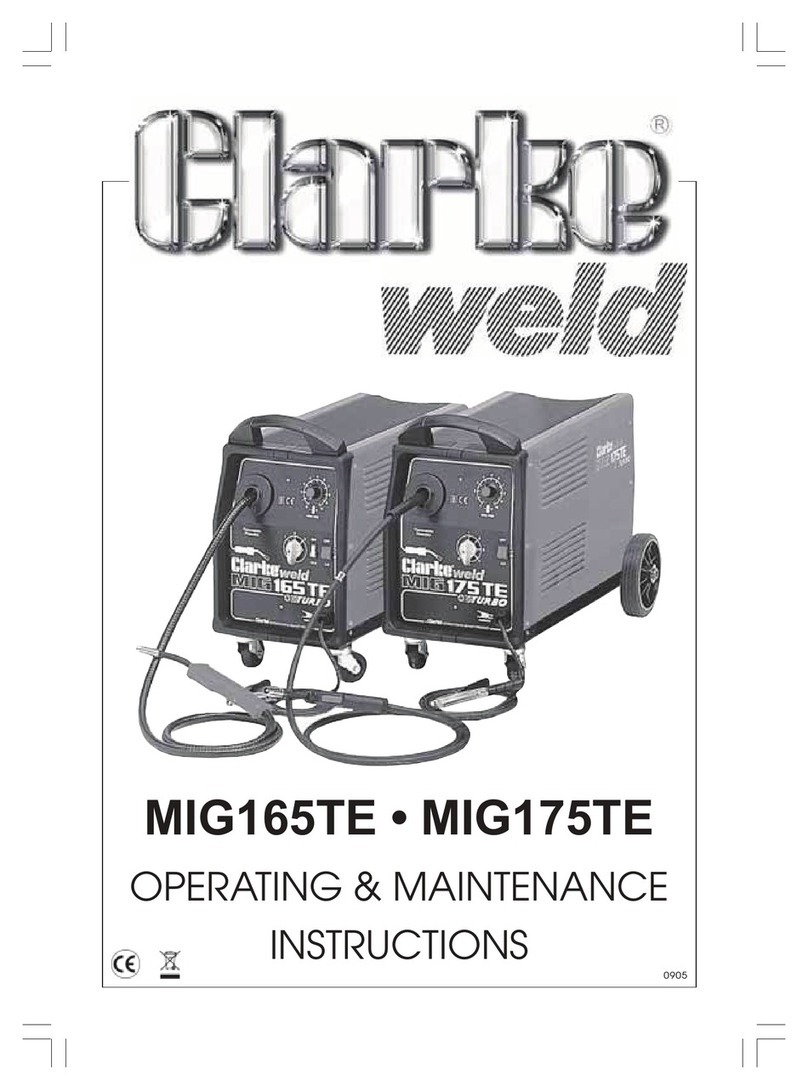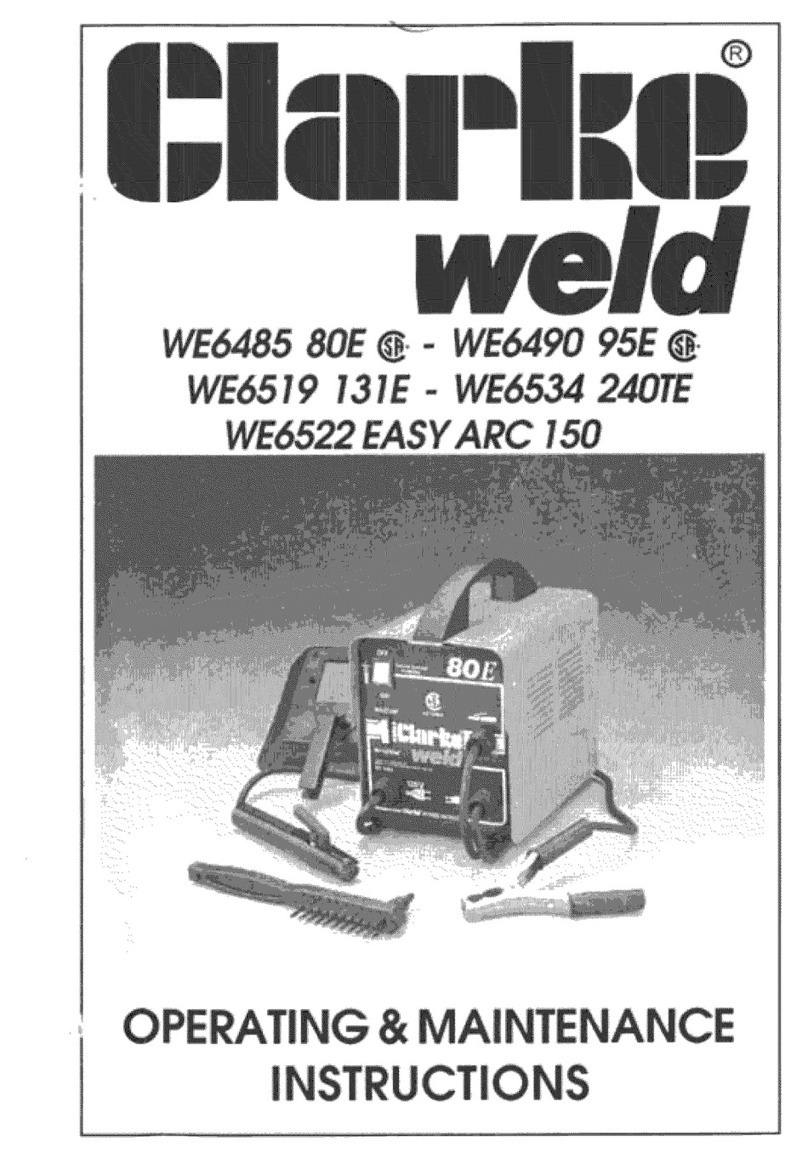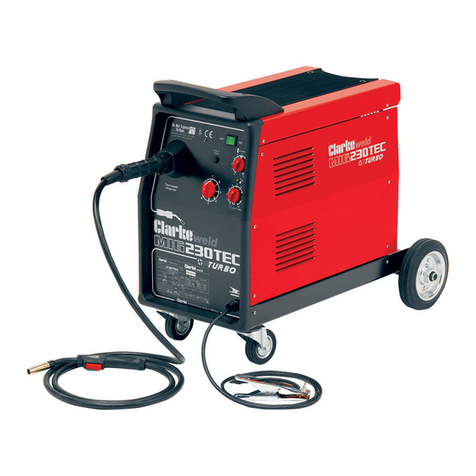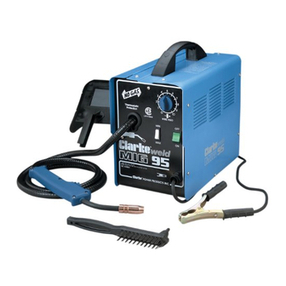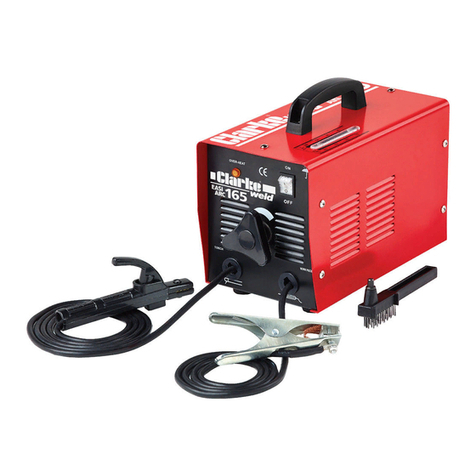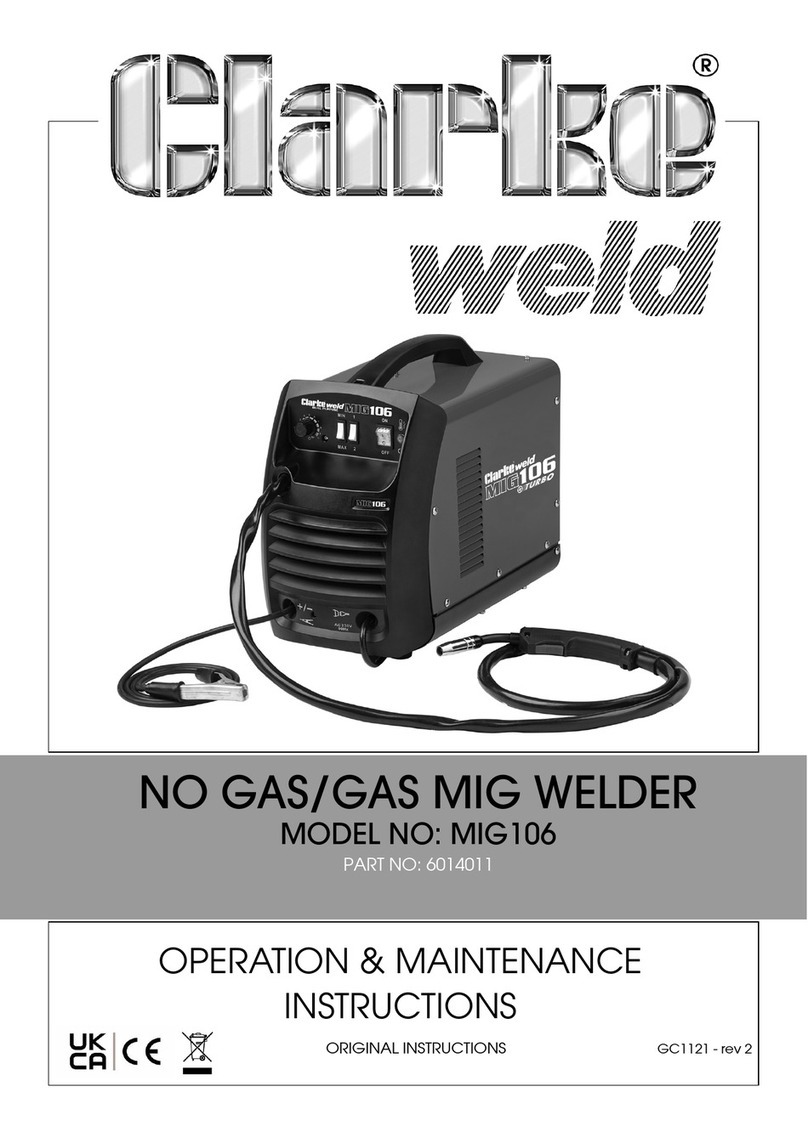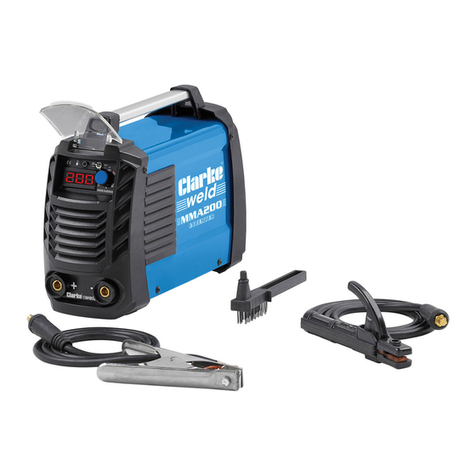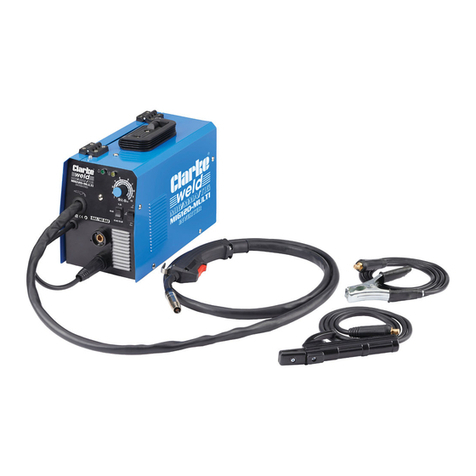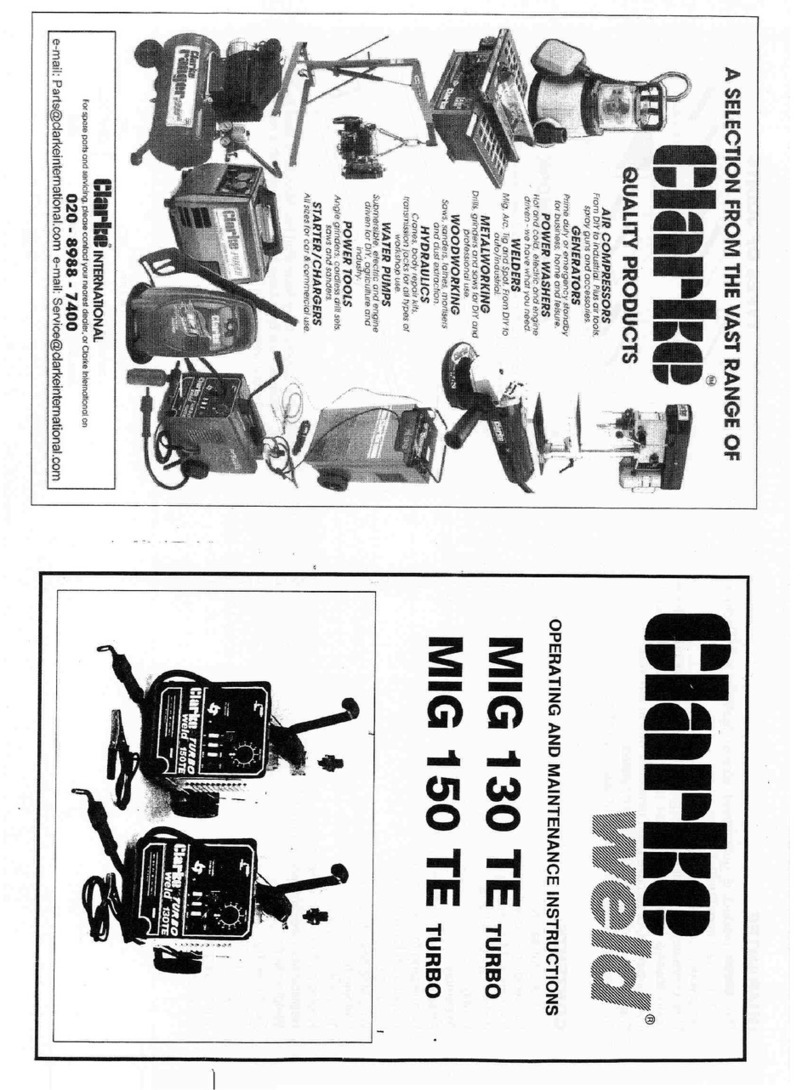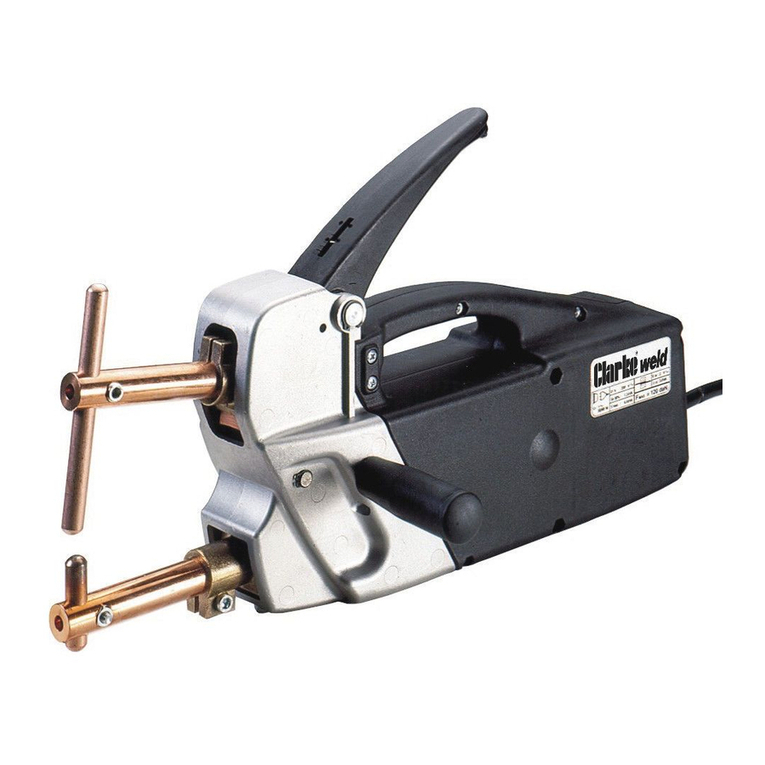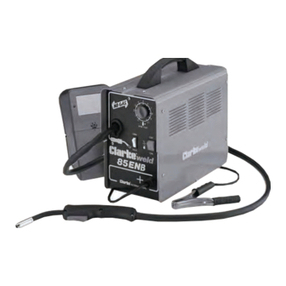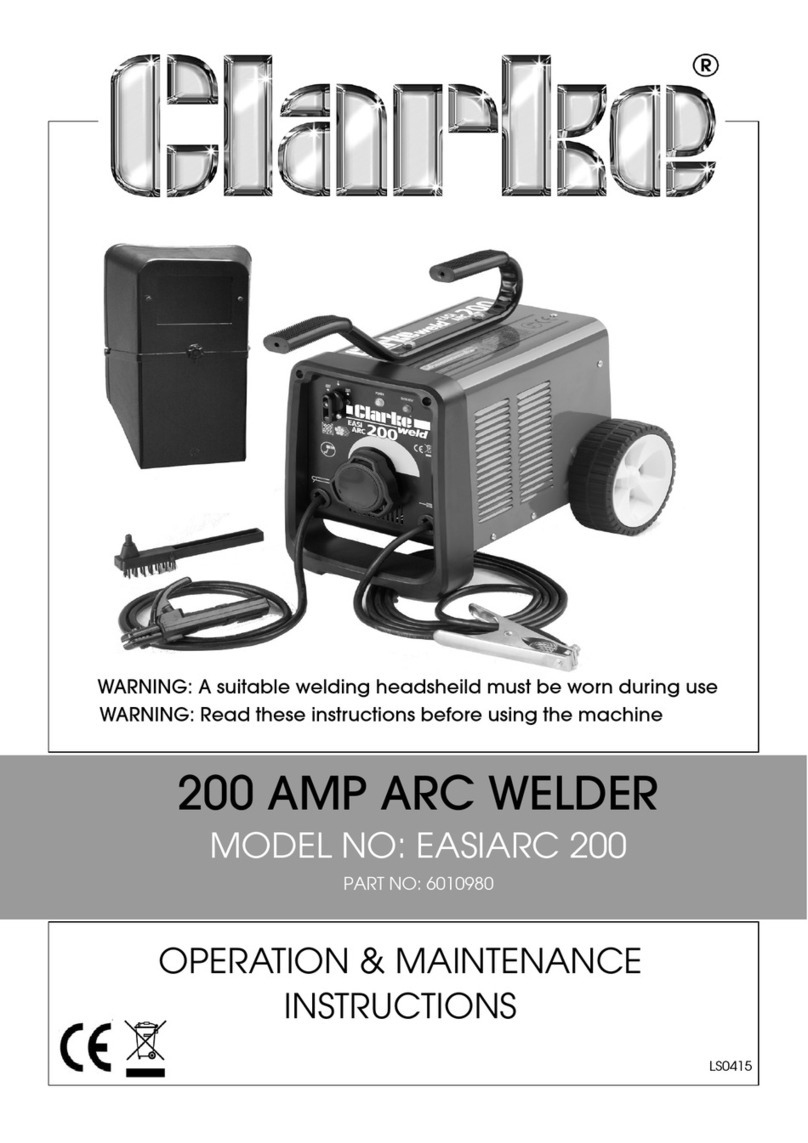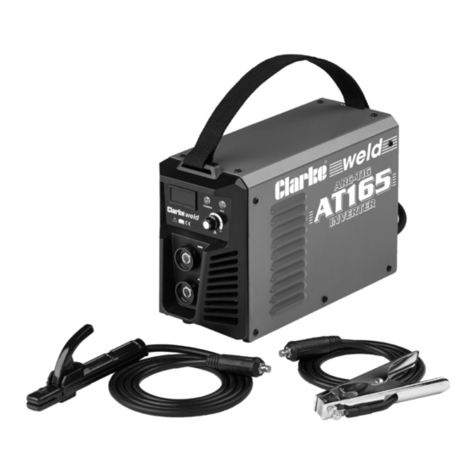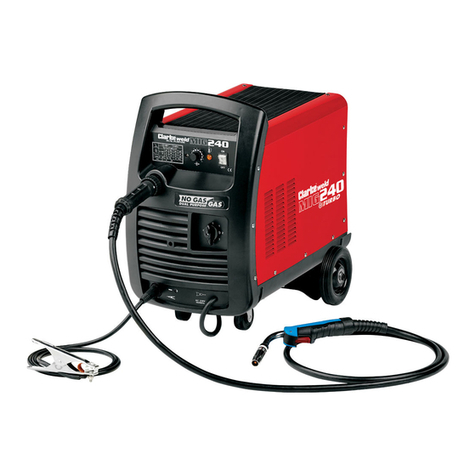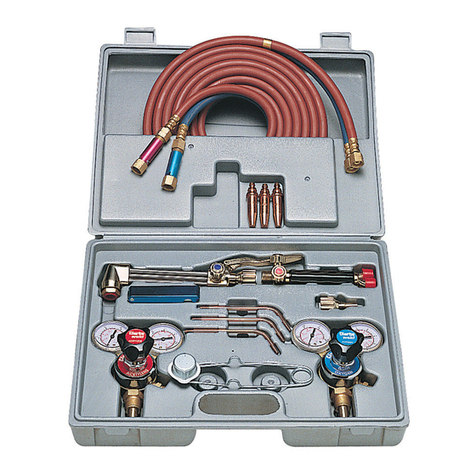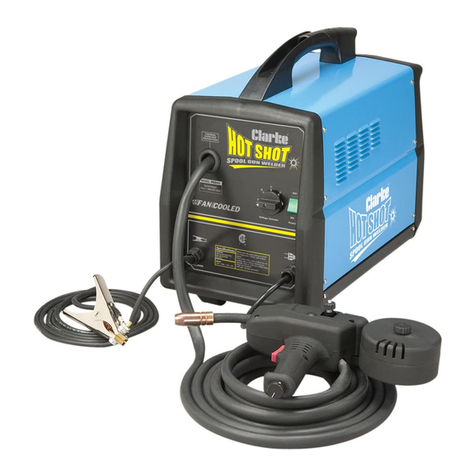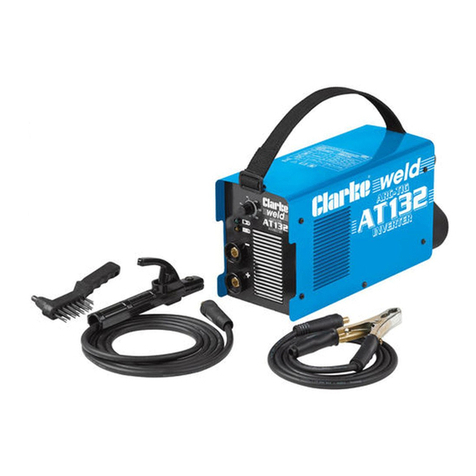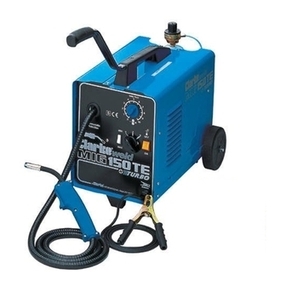9
3-A Burn protection
Complywith precautions in 2. The welding arcisintenseandvisiblybright. Its radiation
candamageeyes,penetratelightweightclothing,reflectfromlightcolouredsurfaces,
and burn the skin and eyes. Skin burns resemble acute sunburn, those from gas -
shieldedarcs are more severe andpainful.
DON’T GET BURNED! COMPLY WITH PRECAUTIONS!
(I) Protective clothing
Wearlongsleevedclothing(particularlyforgas shielded arc) in addition to gloves,
hat and shoes (2-A). As necessary, use additional protective clothing such as
leatherjacket or sleeves, flameproof apron, and fire-resistantleggings.Avoidouter
garments of untreated cotton. Protectbare skin. Wear dark substantial clothing.
Button collar to protect chest and neck and button pockets to prevent entry of
sparks.
(II) Eye and head protection
Protect eyes from exposure to arc. NEVER look at an electric arc without
protection. Welding helmet or shield containing a filter plate shade no. 12
or denser must be used when welding. Place over face before striking arc.
Protect filter plate with a clear cover plate. Cracked or broken helmet or
shield should NOT be worn; radiation can pass through to cause burns.
Cracked, broken, or loose filter plates must be replaced IMMEDIATELY.
Replace clear cover plate when broken, pitted, or spattered. WE
SUGGEST to wear flash goggles with side shields under the helmet, to give
some protection to the eyes should the helmet not be lowered over the
face before an arc is struck. Looking at an arc momentarily with
unprotected eyes (particularly a high intensity gas-shielded arc) can
cause a retinal burn that may leave a permanent dark area in the field of
vision. Before welding whilst wearing contact lenses, seek advice from
your optician.
(III) Protection of Nearby Personnel
For production welding, a separate room or enclosed bay is best. In open
areas,surround the operation with low reflective, non-combustible
screens or panels. Allow for free air circulation, particularly at floor level.
Provide face shields for all persons who will be looking directly at the weld.
Others working in the area should wear flash goggles. Before starting to
weld, make sure that screen or bay doors are closed.
3-B Toxic Fume Prevention
Comply with precautions in 2-B. Generator engine exhaust must be
vented to the outside air. Carbon monoxide can kill.
2-C Fire and explosion prevention
Causes of fire and explosion are: combustibles reached by the arc, flame, flying
sparks, hot slag or heated material; misuse of compressed gases and cylinders;
and short circuits. BE AWARE THAT flying sparks or falling slag can pass through
cracks, along pipes, through windows or doors, and through wall or floor openings,
outofsightofthegoggledoperator.Sparksandslagcanfly 10m. To prevent fires and
explosion: keep equipment clean and operable, free of oil, grease, and (in electrical
parts) of metallic particles that can cause short circuits. If combustibles are in area,
do NOT weld or cut. Move the work if practicable, to an area free of combustibles.
Avoid paint spray rooms, dip tanks, storage areas, ventilators. If the work cannot be
moved, move combustibles at least 10m. away out of reach of sparks and heat; or
protectagainstignition with suitable and snug fitting, fire- resistant coversorshields.
Walls touching combustibles on opposite sides should not be welded on (or cut).
Walls, ceilings, and floor near work should be protected by heat resistant covers or
shields. Fire watcher must be standing by with suitable fire extinguishing equipment
during and for some time after welding or cutting if:
a) appreciable combustibles (including building construction) are within 10m.
b) appreciable combustibles are further than 10m but can be ignited by sparks.
c) openings (concealed or visible) in floors or walls within 10m can expose
combustibles to sparks.
d) combustibles adjacent to walls, ceilings, roofs or metal partitions can be ignited
by radiant or conducted heat.
Afterworkisdone, check that area is free of sparks, glowing embers, andflames.An
empty container that held combustibles, or that can produce flammable or toxic
vapours when heated, must never be welded on or cut, unless container has first
been cleaned. This includes: a thorough steam or caustic cleaning (or a solvent or
water washing, depending on the combustible’s solubility) followed by purging and
inertingwithnitrogenor carbon dioxide, and using protective equipment. Water filling
justbelow working level maysubstitutefor inerting. A containerwithunknowncontents
shouldbecleaned(seeparagraphabove),doNOTdependon sense of smell or sight
todetermine if it issafe to weld orcut. Hollow castings or containers must be vented
beforeweldingorcutting-they can explode. In explosive atmospheres, never weld or
cutwhere theairmay containflammabledust, gas,orliquid vapours (suchasgasoline).
3.0 Electric arc (Mig, Tig) welding
Comply with precautions in 1, 2 and this section. Arc welding, properly
done, is a safe process, but a careless operator invites trouble. The
equipment carries high currents at significant voltages. The arc is very
bright and hot. Sparks fly, fumes rise, ultraviolet and infrared energy
radiates, weldments are hot. The wise operator avoids unnecessary risks
and protects himself and others from accidents.
